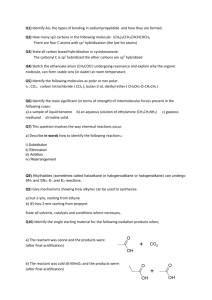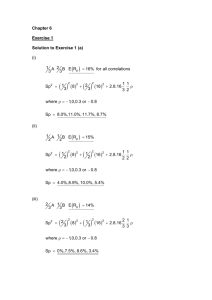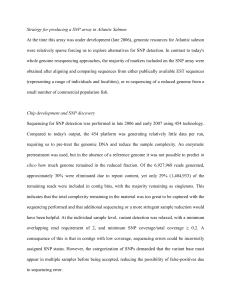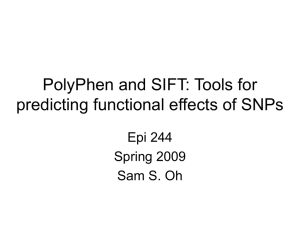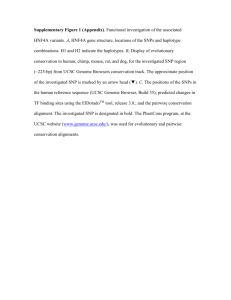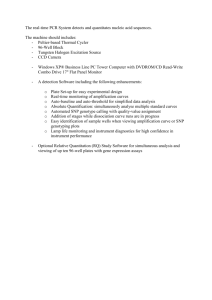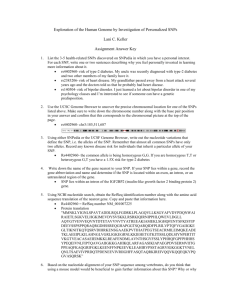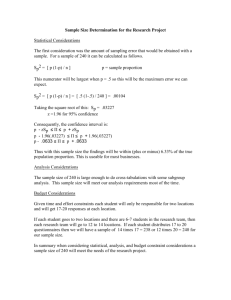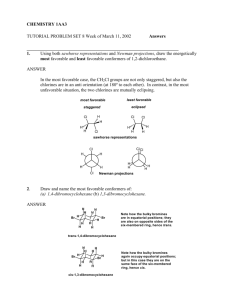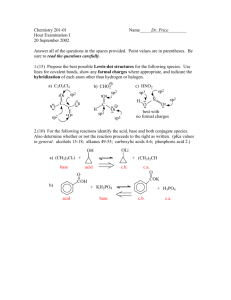SNP Bioinformatics lab
advertisement
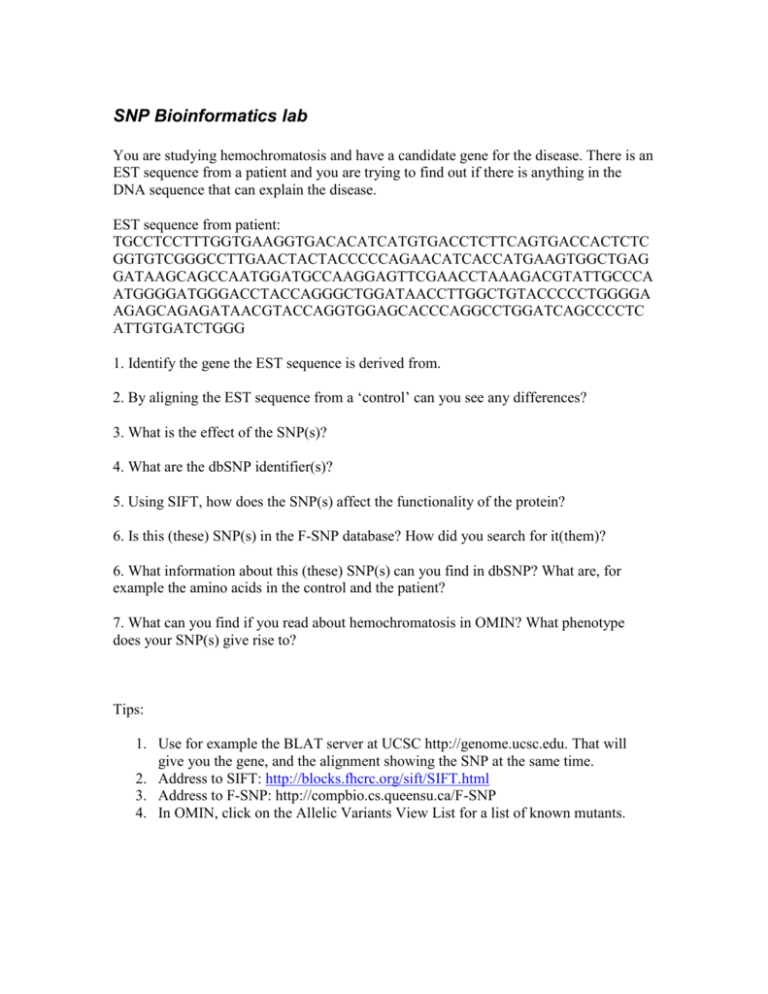
SNP Bioinformatics lab You are studying hemochromatosis and have a candidate gene for the disease. There is an EST sequence from a patient and you are trying to find out if there is anything in the DNA sequence that can explain the disease. EST sequence from patient: TGCCTCCTTTGGTGAAGGTGACACATCATGTGACCTCTTCAGTGACCACTCTC GGTGTCGGGCCTTGAACTACTACCCCCAGAACATCACCATGAAGTGGCTGAG GATAAGCAGCCAATGGATGCCAAGGAGTTCGAACCTAAAGACGTATTGCCCA ATGGGGATGGGACCTACCAGGGCTGGATAACCTTGGCTGTACCCCCTGGGGA AGAGCAGAGATAACGTACCAGGTGGAGCACCCAGGCCTGGATCAGCCCCTC ATTGTGATCTGGG 1. Identify the gene the EST sequence is derived from. 2. By aligning the EST sequence from a ‘control’ can you see any differences? 3. What is the effect of the SNP(s)? 4. What are the dbSNP identifier(s)? 5. Using SIFT, how does the SNP(s) affect the functionality of the protein? 6. Is this (these) SNP(s) in the F-SNP database? How did you search for it(them)? 6. What information about this (these) SNP(s) can you find in dbSNP? What are, for example the amino acids in the control and the patient? 7. What can you find if you read about hemochromatosis in OMIN? What phenotype does your SNP(s) give rise to? Tips: 1. Use for example the BLAT server at UCSC http://genome.ucsc.edu. That will give you the gene, and the alignment showing the SNP at the same time. 2. Address to SIFT: http://blocks.fhcrc.org/sift/SIFT.html 3. Address to F-SNP: http://compbio.cs.queensu.ca/F-SNP 4. In OMIN, click on the Allelic Variants View List for a list of known mutants.
